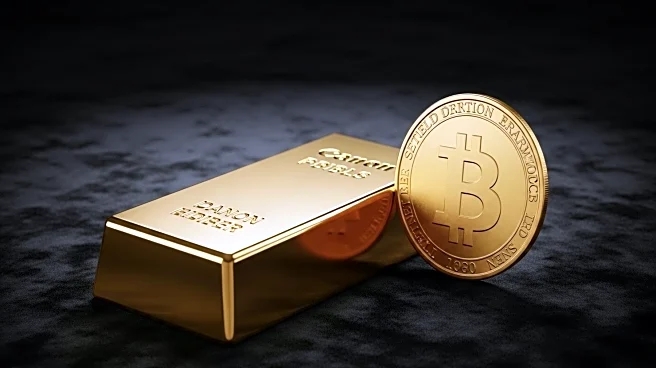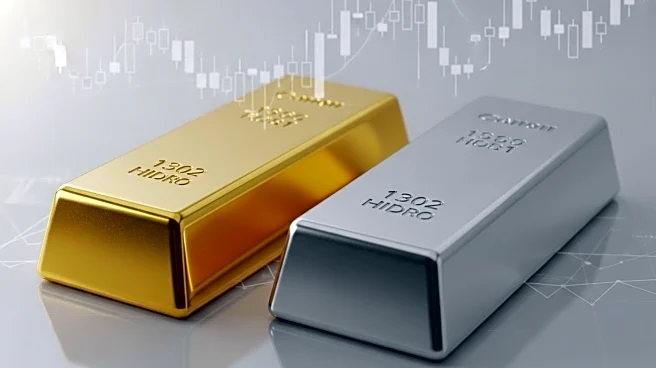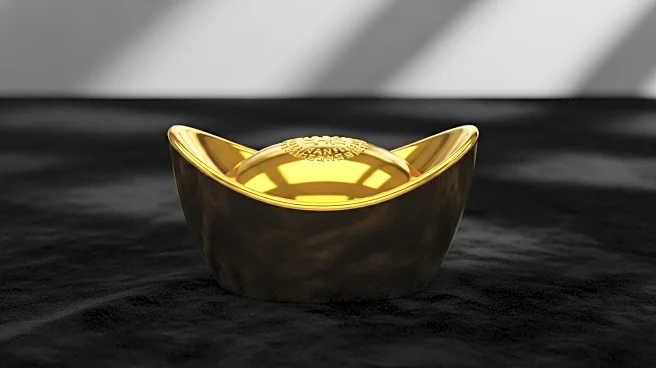What's Happening?
Gold prices have reached near-record levels, prompting a significant wave of profit-taking among investors in the precious metals market. With spot gold trading above $3,500 per ounce, both institutional and individual investors are seizing the opportunity to convert paper gains into realized returns. This trend is evident as trading volumes at precious metals dealers have shifted towards selling, with physical gold sales to dealers increasing by 47% quarter-over-quarter. The numismatic coin market is also experiencing a surge, with rare coins fetching record prices at auctions. This selling activity is driven by several factors, including the achievement of price targets set by investors, the need for portfolio rebalancing, and economic shifts that suggest a potential decrease in gold's appeal as an inflation hedge.
Why It's Important?
The current selling trend in the gold market highlights the broader economic dynamics at play, including inflation expectations and Federal Reserve policies. As investors lock in profits, the market is witnessing a reallocation of assets, which could impact the demand for gold and other precious metals. This shift may also influence the broader financial markets, as investors seek to diversify their portfolios in response to changing economic conditions. The selling wave reflects a strategic move by investors to manage risk and capitalize on favorable market conditions, which could have implications for future gold prices and investment strategies.
What's Next?
As the market adjusts to the current selling pressure, stakeholders will be closely monitoring economic indicators and Federal Reserve communications for further guidance. The potential for changes in interest rates and inflation expectations could influence future gold prices and investor behavior. Additionally, the demographic shift among collectors, with older investors liquidating assets, may continue to impact the numismatic market. Investors and dealers will need to navigate these dynamics carefully to maximize returns and manage risks effectively.
Beyond the Headlines
The current market conditions also raise questions about the long-term role of gold as a safe-haven asset. As economic conditions evolve, the traditional view of gold as a hedge against inflation and economic uncertainty may be challenged. This could lead to a reevaluation of investment strategies and the role of precious metals in diversified portfolios. Furthermore, the generational shift in the numismatic market highlights changing preferences and collecting patterns, which could influence the future demand for rare coins.










